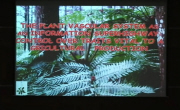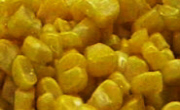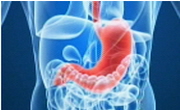1. 전 세계 GM작물 재배면적은 매년 꾸준히 증가하여 2018년에는 191.7백만 ha에 도달하였다. 26개국에서 GM작물이 재배되고 있으며, EU 포함 44개국에서 식품, 사료 및 가공용으로 승인하였다. 2. ...
http://chineseinput.net/에서 pinyin(병음)방식으로 중국어를 변환할 수 있습니다.
변환된 중국어를 복사하여 사용하시면 됩니다.
- 中文 을 입력하시려면 zhongwen을 입력하시고 space를누르시면됩니다.
- 北京 을 입력하시려면 beijing을 입력하시고 space를 누르시면 됩니다.
https://www.riss.kr/link?id=A107182780
- 저자
- 발행기관
- 학술지명
- 권호사항
-
발행연도
2020
-
작성언어
Korean
-
주제어
GMO ; Risk Assessment ; GM crop ; Trait
-
등재정보
KCI등재
-
자료형태
학술저널
-
수록면
396-402(7쪽)
-
KCI 피인용횟수
0
- 제공처
-
0
상세조회 -
0
다운로드
부가정보
국문 초록 (Abstract)
1. 전 세계 GM작물 재배면적은 매년 꾸준히 증가하여 2018년에는 191.7백만 ha에 도달하였다. 26개국에서 GM작물이 재배되고 있으며, EU 포함 44개국에서 식품, 사료 및 가공용으로 승인하였다. 2. 국내 농업용 GM작물 승인 현황 조사 결과, 2015년에 GM작물이 가장 많이 승인되었으며, 농업적 형질은 제초제내성에 이어 해충저항성이 많았다. 단일품목과 후대교배종을 포함하여 옥수수가 가장 많이 승인된 작물이며, 후대교배종 승인은 꾸준히 증가하여 승인된 전체 GM작물의 57%를 차지한다. 3. 승인된 GM작물의 형질은 농업적 유용 형질에서 소비자 중심으로 변화되고 있다. 제초제내성과 해충저항성과 같은 1세대 GM작물은 생산비 절감이나 수량 증가 등으로 농민에게 경제적 이익을 제공하였으며, 2세대 GM작물은 소비자들에게 더 많은 혜택을 제공하는 기능성 강화나 산업용 특성을 증가시킨 것이 특징이다. 4. 향후 농업인과 소비자 모두에게 이익이 되는 연구개발과 실용화 추진을 위해 미래 대응 GM작물 개발과 형질 예측에 필요한 산업 성장 추세 정보를 제공하였다.
다국어 초록 (Multilingual Abstract)
The global cultivation area of GM crops continued to grow in 2018, and reached 191.7 million hectares. Twenty-six countries approved GM crops for cultivation and an additional 44 countries (including EU-28) imported GM crops for food, feed, and proces...
The global cultivation area of GM crops continued to grow in 2018, and reached 191.7 million hectares. Twenty-six countries approved GM crops for cultivation and an additional 44 countries (including EU-28) imported GM crops for food, feed, and processing. This paper investigates the trends in GM approvals for agricultural uses based on the number of approving GM crops and traits in Korea. Results show that GM crops for feed were the most approved in 2015 and herbicide-tolerant traits had the highest GM crops approved, followed by insect-resistant traits. Maize had the highest number of GM crops, including single and stacked traits, and the stacked traits gradually increased, which is already 57% of the total approved GM crops. The approved GM crops’ traits are changing from economic benefits for farmers, to the consumers’ benefit. The first-generation GM crops, such as herbicide-tolerant and insect-resistant, have proven their ability to offer important economic advantages, either in the form of lower production costs or higher yields. The second-generation GM crops feature increased nutritional value or industrial traits that have more benefits to consumers. Not only research and development, but also commercialization, should be carried out in a way that benefits both farmers and consumers in the future. Hence, the paper provided information on the growth of the GM crop industry, which may be vital in predicting future GM crops and traits.
목차 (Table of Contents)
- ABSTRACT
- 서 언
- 1. 국내 농업용 위해성 심사 현황
- 2. 국제 GM작물 연구개발 현황
- 3. 국내 GM작물 연구개발 현황
- ABSTRACT
- 서 언
- 1. 국내 농업용 위해성 심사 현황
- 2. 국제 GM작물 연구개발 현황
- 3. 국내 GM작물 연구개발 현황
- 적 요
- REFERENCES
참고문헌 (Reference)
1 김도영, "인간 상피성장인자 유전자 발현 유전자변형 콩의 생태계 침입성 평가" 한국잔디학회 9 (9): 119-128, 2020
2 노경희, "유채에서의 중쇄지방산 생산" 한국응용생명화학회 53 (53): 65-70, 2010
3 김은진, "유전자조작벼 상용화의 법적 문제" 한국경영법률학회 27 (27): 681-709, 2017
4 우희종, "국내 유전자 변형 작물의 개발 현황" 한국국제농업개발학회 18 (18): 2006
5 Wood, C.C, "Seed-specific RNAi in safflower generates a superhigh oleic oil with extended oxidative stability" 16 : 1788-1796, 2018
6 USTR, "National trade estimate report on foreign trade barriers" 315-, 2020
7 Lee H. S., "LMO Stats" 21 : 40-57, 2020
8 ISAAA, "Global status of commercialized biotech/GM crops in 2018: Biotech crops continue to help meet the challenges of increased population and climate change" 2018
9 조정일, "GM작물 연구개발 및 상용화 동향" 한국육종학회 52 : 40-48, 2020
10 OECD, "Consensus Document on the Biology of Safflower (Carthamus tinctorius L.) Series on harmonisation of regulatory oversight in biotechnology No. 68"
1 김도영, "인간 상피성장인자 유전자 발현 유전자변형 콩의 생태계 침입성 평가" 한국잔디학회 9 (9): 119-128, 2020
2 노경희, "유채에서의 중쇄지방산 생산" 한국응용생명화학회 53 (53): 65-70, 2010
3 김은진, "유전자조작벼 상용화의 법적 문제" 한국경영법률학회 27 (27): 681-709, 2017
4 우희종, "국내 유전자 변형 작물의 개발 현황" 한국국제농업개발학회 18 (18): 2006
5 Wood, C.C, "Seed-specific RNAi in safflower generates a superhigh oleic oil with extended oxidative stability" 16 : 1788-1796, 2018
6 USTR, "National trade estimate report on foreign trade barriers" 315-, 2020
7 Lee H. S., "LMO Stats" 21 : 40-57, 2020
8 ISAAA, "Global status of commercialized biotech/GM crops in 2018: Biotech crops continue to help meet the challenges of increased population and climate change" 2018
9 조정일, "GM작물 연구개발 및 상용화 동향" 한국육종학회 52 : 40-48, 2020
10 OECD, "Consensus Document on the Biology of Safflower (Carthamus tinctorius L.) Series on harmonisation of regulatory oversight in biotechnology No. 68"
11 MSIT, "Biotechnology white paper" Ministry of Science and ICT 730-, 2019
12 홍준기, "Agrobacterium을 이용한 제초제 저항성 옥수수 형질전환체 생산" 한국육종학회 51 (51): 290-297, 2019
13 Kim, M. H., "A comparative study of korean agriculture based on international agricultural statistics" Korea Rural Economic Institute 190-, 2020
14 Mani V., "A Metabolic perspective and opportunities in pharmacologically important safflower" 10 (10): 1-18, 2020
15 RDA, "4th Mid to long term plan for development of agricultural biotechnology (2018-2017)" Rural Development Administration 440-, 2018
16 KBCH, "2019 Living modified organism statistics"
동일학술지(권/호) 다른 논문
-
- 한국국제농업개발학회
- 은소영
- 2020
- KCI등재
-
베타카로틴 강화 GM콩과 야생콩간 교잡콩의 주요 영양성분 비교분석
- 한국국제농업개발학회
- 오성덕
- 2020
- KCI등재
-
- 한국국제농업개발학회
- 김은화
- 2020
- KCI등재
-
- 한국국제농업개발학회
- 이효정
- 2020
- KCI등재
분석정보
인용정보 인용지수 설명보기
학술지 이력
| 연월일 | 이력구분 | 이력상세 | 등재구분 |
|---|---|---|---|
| 2026 | 평가예정 | 재인증평가 신청대상 (재인증) | |
| 2020-01-01 | 평가 | 등재학술지 유지 (재인증) |  |
| 2017-01-01 | 평가 | 등재학술지 선정 (계속평가) |  |
| 2016-01-01 | 평가 | 등재후보학술지 유지 (계속평가) |  |
| 2015-12-01 | 평가 | 등재후보로 하락 (기타) |  |
| 2014-01-08 | 학술지명변경 | 외국어명 : Kor. J. Intl. Agri. -> The Journal of the Korean Society of International Agriculture |  |
| 2011-01-01 | 평가 | 등재 1차 FAIL (등재유지) |  |
| 2009-01-01 | 평가 | 등재학술지 유지 (등재유지) |  |
| 2006-01-01 | 평가 | 등재학술지 선정 (등재후보2차) |  |
| 2005-05-29 | 학술지명변경 | 한글명 : 韓國國際農業開發學會誌 -> 한국국제농업개발학회지 |  |
| 2005-01-01 | 평가 | 등재후보 1차 PASS (등재후보1차) |  |
| 2004-01-01 | 평가 | 등재후보 1차 FAIL (등재후보1차) |  |
| 2003-01-01 | 평가 | 등재후보학술지 선정 (신규평가) |  |
학술지 인용정보
| 기준연도 | WOS-KCI 통합IF(2년) | KCIF(2년) | KCIF(3년) |
|---|---|---|---|
| 2016 | 0.32 | 0.32 | 0.3 |
| KCIF(4년) | KCIF(5년) | 중심성지수(3년) | 즉시성지수 |
| 0.3 | 0.27 | 0.561 | 0.01 |
연관 공개강의(KOCW)
-

The plant vascular system as an information superhighway control over traits vital to agricultural production
경상국립대학교 루카스 윌리엄 -

Information Superhighway of the Plant - Control Over Traits Vital to Agricultural Production
경상국립대학교 루카스 윌리엄 -

GMO식품, 먹어도 될까?
YTN SCIENCE -

미래의 청신호, GMO
YTN SCIENCE -

사회기업의 중요한 특징
Harvard University John Elkington





 코리아스칼라
코리아스칼라

